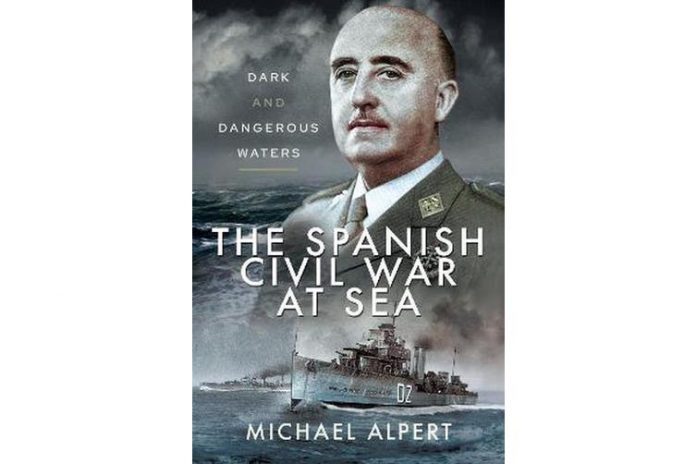
The Spanish Civil War at Sea: Dark and Dangerous Waters, By Michael Alpert. Pen and Sword, Barnsley, South Yorkshire, 2021.
Reviewed by John Johnston
The noise and the fury of the 1936-9 civil war in Spain still resonate in contemporary Europe, whether in the location of a memorial in London, the naming of streets in Germany, or allusions to the flight of Spanish republicans in today’s refugee crises.
In Spain itself, any examination of the constitution, the status of the monarchy, or the origins of modern political parties will lead back to the violent and bloody end of the second republic. Unfortunately, the mythologies that surround events in and around the Iberian Peninsula in the late 1930s obscure details of how the war was fought, how the German and Italian dictatorships supported the nationalist insurgency and the Soviet Union the beleaguered republic, and why the Britain and France, the great European democracies, gave no more than half-hearted support to the legitimate government of Spain. With this book, Michael Alpert, a leading expert on the conflict, removes some of that obscurity and answers some of those questions.
Beginning with a description of the Spanish navy at the outbreak of the conflict, Alpert traces the naval war in Spain from Franco’s abortive coup d’état through to the final collapse of the republic and the scramble of refugees to be taken to safety on British or French ships. In reality, as Alpert notes, the nationalists’ maritime successes at the beginning of the conflict – establishing control of the waters between Iberia and North Africa, taking the Balearic Islands, and holding the major naval facility at El Ferrol in northwest Spain – gave the insurgents an advantage that would ultimately translate into victory on land. Holding ports like Cadiz facilitated German and Italian intervention and gave the nationalists secure bases for resupply and refurbishment and from which they could interdict traffic to republican-held ports on the Cantabrian and Mediterranean coasts by surface or air attack. Strategically and operationally, neither side had a decisive advantage over the other. But, while the republican fleet could only control the sea for long enough to escort a convoy into harbour, the nationalists had command over most of the waters around the peninsula and, through holding the strategic initiative, paralysed the republicans’ enfeebled decision-making processes.
For Britain and France, the Spanish war was potentially disastrous. A nationalist success through German and Italian intervention threatened to give Germany and Italy dominance in the Mediterranean and a forward base in the Atlantic, while republican success with Soviet support raised the prospect of a communist revolution in western Europe. As either outcome would threaten the balance of power on the continent, the democracies sought to isolate the conflict through a non-intervention agreement or an international blockade of both parties. The agreement was ineffectual, and when Italian submarine attacks on merchant shipping threatened to expand the conflict beyond the Iberian Peninsula, British and French naval vessels were made ready for counter measures until the attacks ceased. To complicate matters yet further, the British had extensive commercial interests throughout Spain and wanted to appear and to be seen as a strictly neutral party to the conflict. Unfortunately for the king’s government, the Basque country relied on trade with Britain to sustain itself and to fund its war effort. British skippers readily ran the nationalist blockade, forcing the Royal Navy reluctantly and unwillingly to practise convoy escort and counter-piracy drills to bring British-registered vessels into ports like Santander. Alpert’s account of these episodes is a significant case study of Chamberlain government’s appeasement policy in action, showing how British colonial and foreign office officials operated that policy in practice and how the tensions which resulted played out in the country’s political leadership and in public opinion.
The book is worth reading merely as an account of a neglected aspect of the Spanish Civil War. Alpert’s descriptions of social tensions within the Spanish military exploding in an orgy of violence when Franco’s army crossed the Straits of Gibraltar, of the various naval actions that took place along the Cantabrian and Mediterranean coasts, and the diplomatic merry-go-round through which the external powers that had found themselves drawn into the war sought to resolve their conflicting interests are fascinating and some of the anecdotes which he relates are scarcely credible. These stories alone make the book enjoyable for the general reader, but the specialist reader will find much to consider in parallels between the Spanish Civil War and regional conflicts today and may ponder on the lessons which the war in Spain has for contemporary maritime strategists and policy makers.



